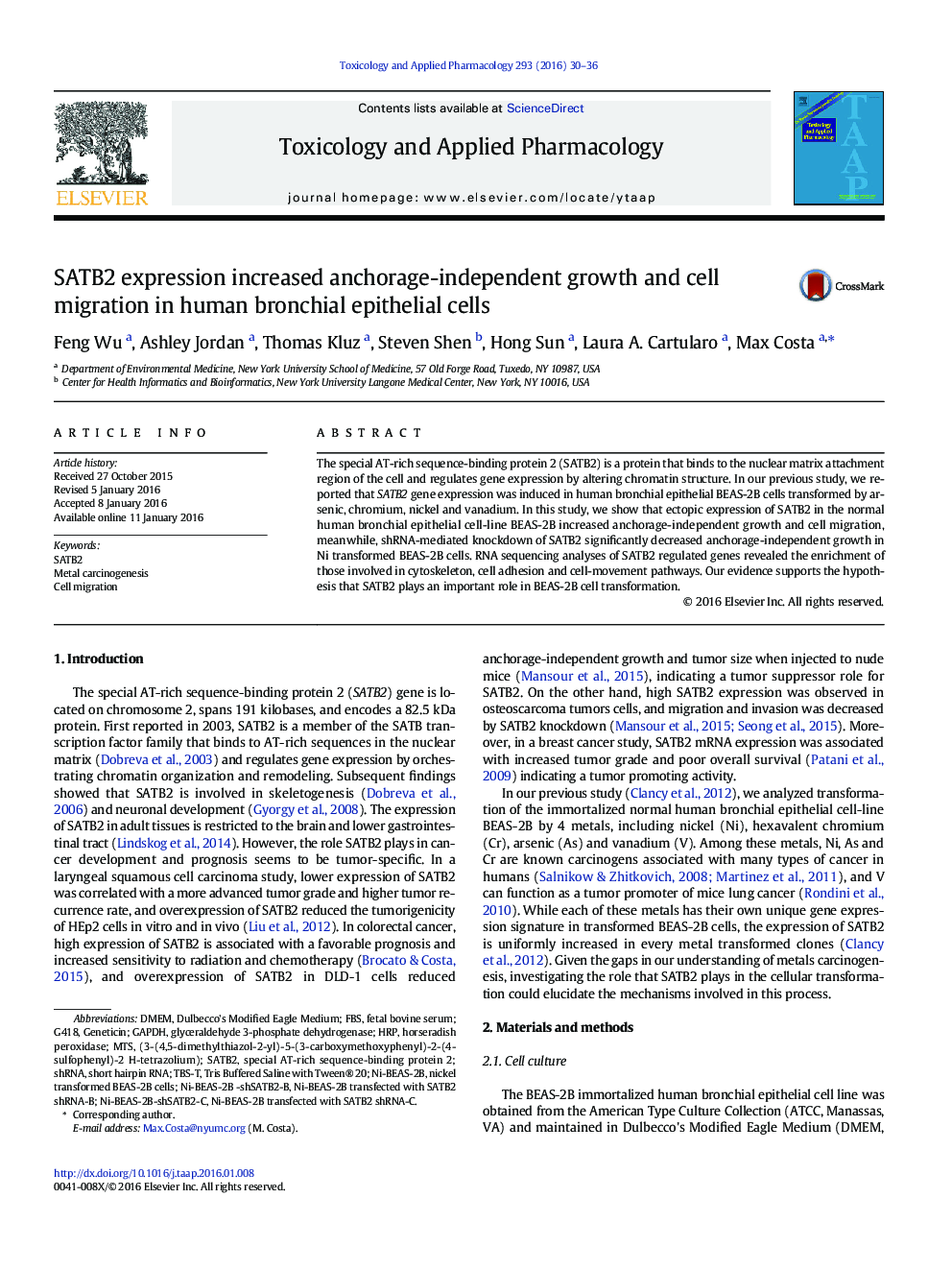| Article ID | Journal | Published Year | Pages | File Type |
|---|---|---|---|---|
| 2568227 | Toxicology and Applied Pharmacology | 2016 | 7 Pages |
•We performed SATB2 overexpression in the BEAS-2B cell line.•We performed SATB2 knockdown in a Ni transformed BEAS-2B cell line.•SATB2 induced anchorage-independent growth and increased cell migration.•SATB2 knockdown significantly decreased anchorage-independent growth.•We identified alterations in gene involved in cytoskeleton, cell adhesion.
The special AT-rich sequence-binding protein 2 (SATB2) is a protein that binds to the nuclear matrix attachment region of the cell and regulates gene expression by altering chromatin structure. In our previous study, we reported that SATB2 gene expression was induced in human bronchial epithelial BEAS-2B cells transformed by arsenic, chromium, nickel and vanadium. In this study, we show that ectopic expression of SATB2 in the normal human bronchial epithelial cell-line BEAS-2B increased anchorage-independent growth and cell migration, meanwhile, shRNA-mediated knockdown of SATB2 significantly decreased anchorage-independent growth in Ni transformed BEAS-2B cells. RNA sequencing analyses of SATB2 regulated genes revealed the enrichment of those involved in cytoskeleton, cell adhesion and cell-movement pathways. Our evidence supports the hypothesis that SATB2 plays an important role in BEAS-2B cell transformation.
